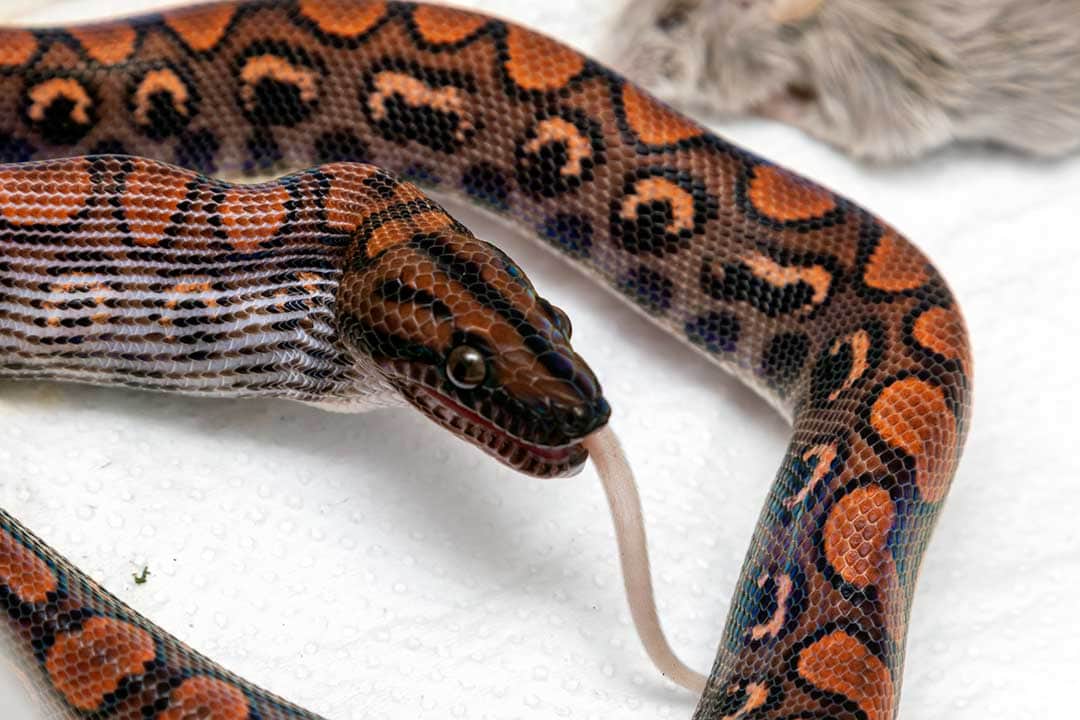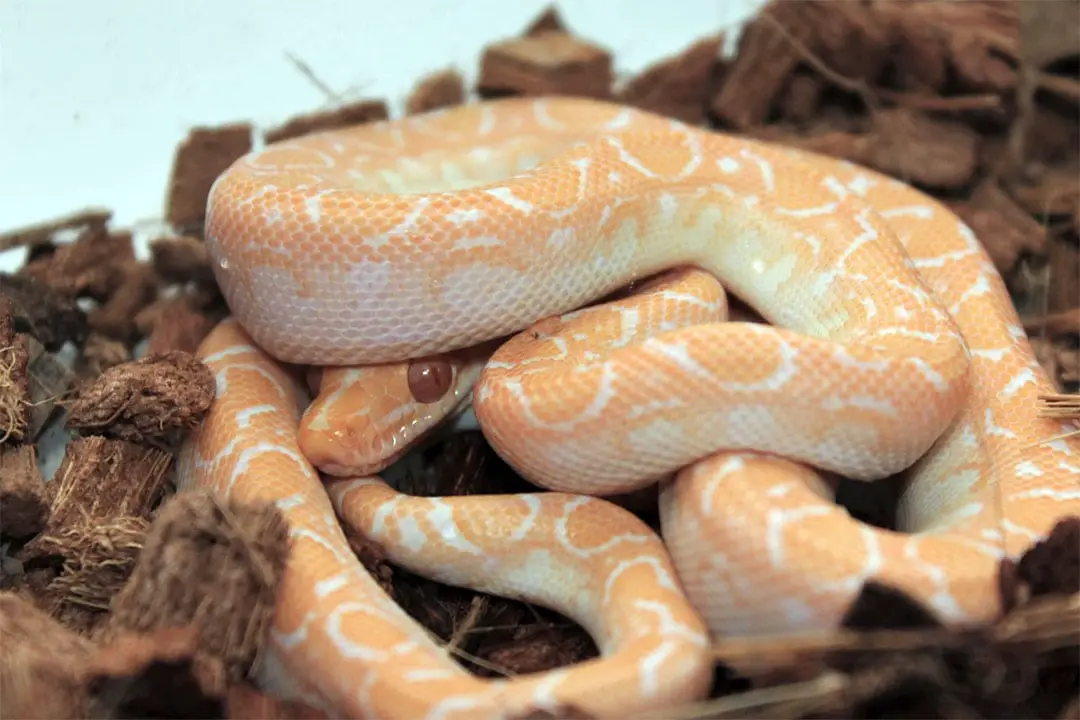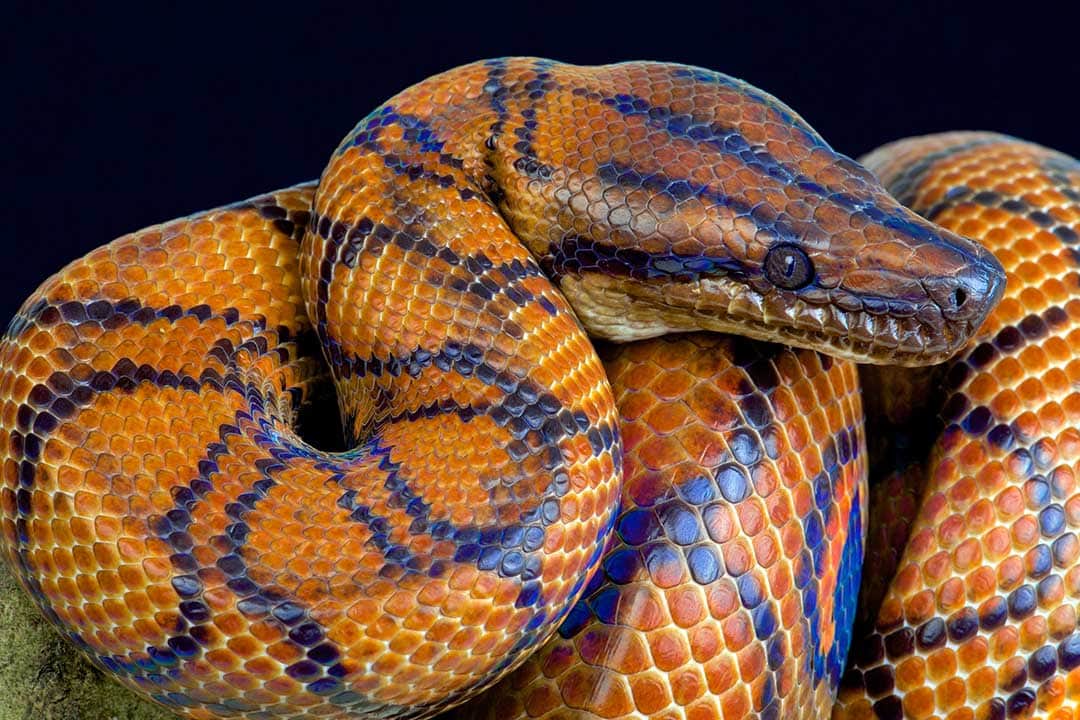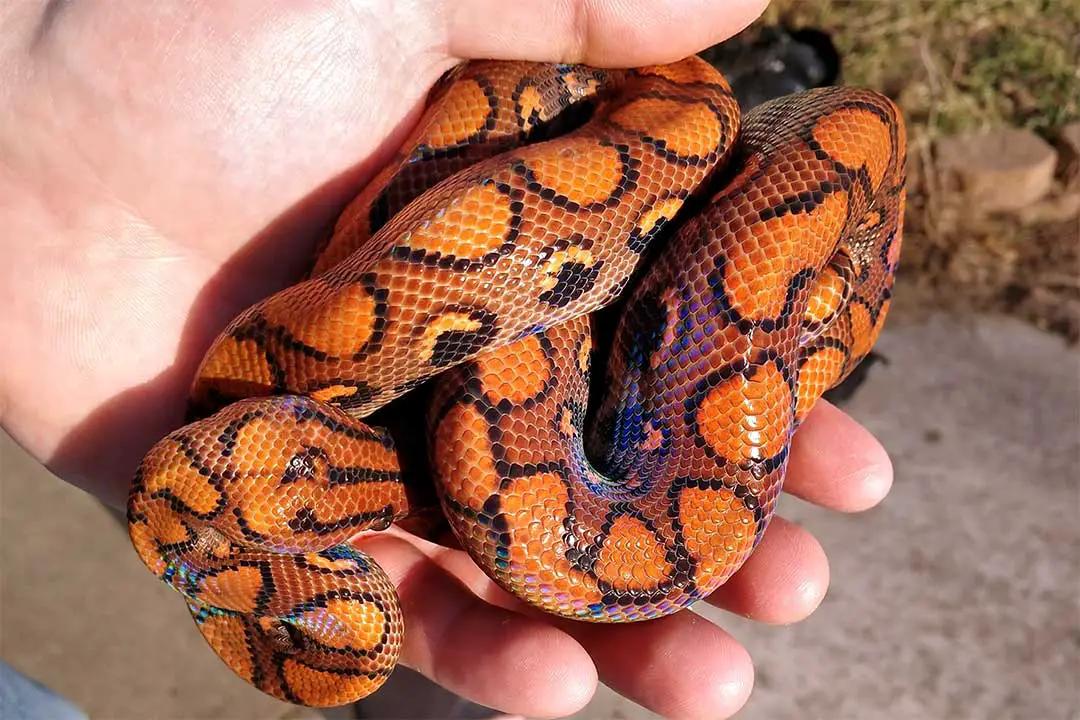Brazilian rainbow boas (Epicrates cenchria) are known to be excellent feeders.
They rarely go on a feeding strike once they are established. If your new snake isn’t eating, or your pet suddenly goes on a feeding strike, there are a few reasons why.
Here are some of the reasons why your brazilian rainbow boa is not eating:
1. Stress
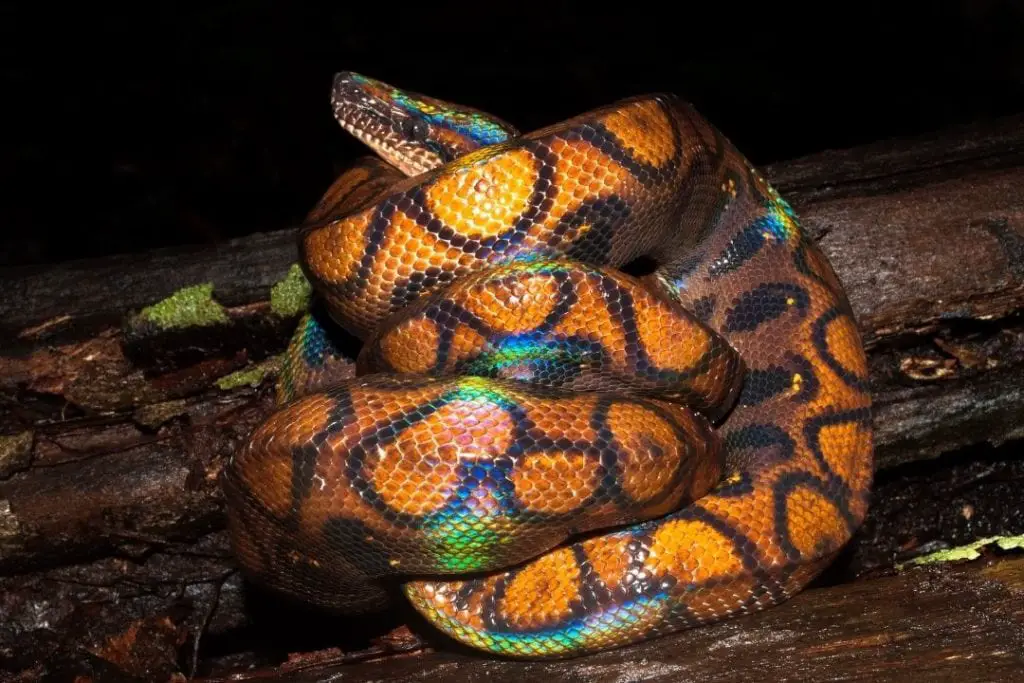
Stress is a major appetite suppressant for most animals. You have likely experienced this as well. A snake that has just been brought to a new home will be stressed out from the change in environment.
This could be because you just got your snake, or because you moved and had to change their setup. If you have changed them to a new enclosure, this can also stress out your rainbow boa.
They will likely refuse to feed until they feel comfortable. Leave your snake alone for at least a week. If it is new, try giving it about 2 weeks to settle in and calm down.
Always keep the enclosure in a quiet area and consider covering the enclosure with a towel to make the whole thing feel more secure.
Just make sure you have some ventilation. Offering prey in a hide can help a shy snake feel more willing to feed. If you are planning on leaving a prey item in the enclosure, be sure to use only pre-killed prey.
2. Poor Conditions
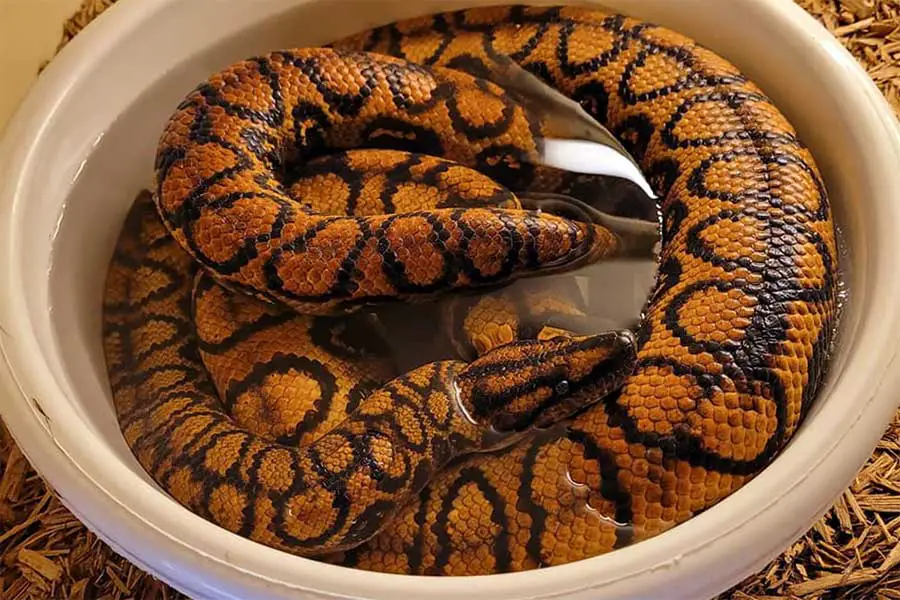
If your rainbow boa’s enclosure setup and conditions are off, your Brazilian rainbow boa will refuse to eat. Check your temperatures with an IR heat gun and watch the humidity.
Snakes that are too hot or cold will be grumpy and stressed. They may refuse to eat, particularly if the temperature is too cold.
Low humidity will cause dehydration, and that can put a snake off its food. Be sure to check with multiple instruments to be sure that your thermometers and hygrometer are accurate.
You should also make sure you have hides on each side so your snake can pick where to hide during the day. Make sure your snake has at least 10 hours of darkness a day.
Turn off any lighting so your snake feels safe. Brazilian rainbow boas are nocturnal, so darkness is necessary for their comfort.
3. Prey Type
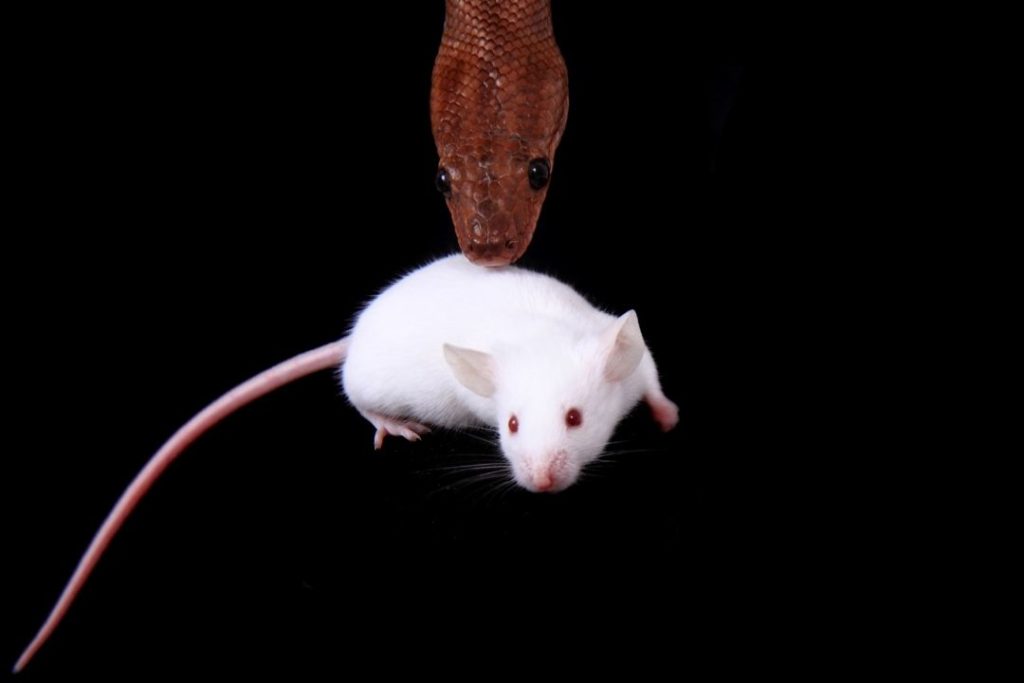
When you first get a new snake, make sure you ask what it was eating. Brazilian rainbow boas can be very picky on prey type. Some will only eat rats, while others will only touch rats.
Some aren’t picky on the species of prey, but will only eat piebald animals or refuse to touch a rodent with any trace of white fur.
Some young rainbow boas also heavily prefer lizards or chicks as prey items. In these cases, scenting a mouse will work to trick the snake into switching to a new prey type. If you are offering frozen and thawed rodents, be sure they are heated up.
Brazilian rainbow boas hunt primarily with their sense of heat so they may not notice prey that is cold or room temperature.
Dipping a frozen rodent briefly in hot water can trick the snake. You can also wiggle the prey or poke the snake’s tail with the prey to convince it to strike.
Braining a dead rodent can also work since the smell may be more appealing to your snake. Just use a needle to poke a hole in the skull and squeeze out some brain matter.
While gross, many reptile keepers swear on this method as excellent for helping a reluctant snake to eat.
4. The Rainbow Boa is in Shed or Breeding
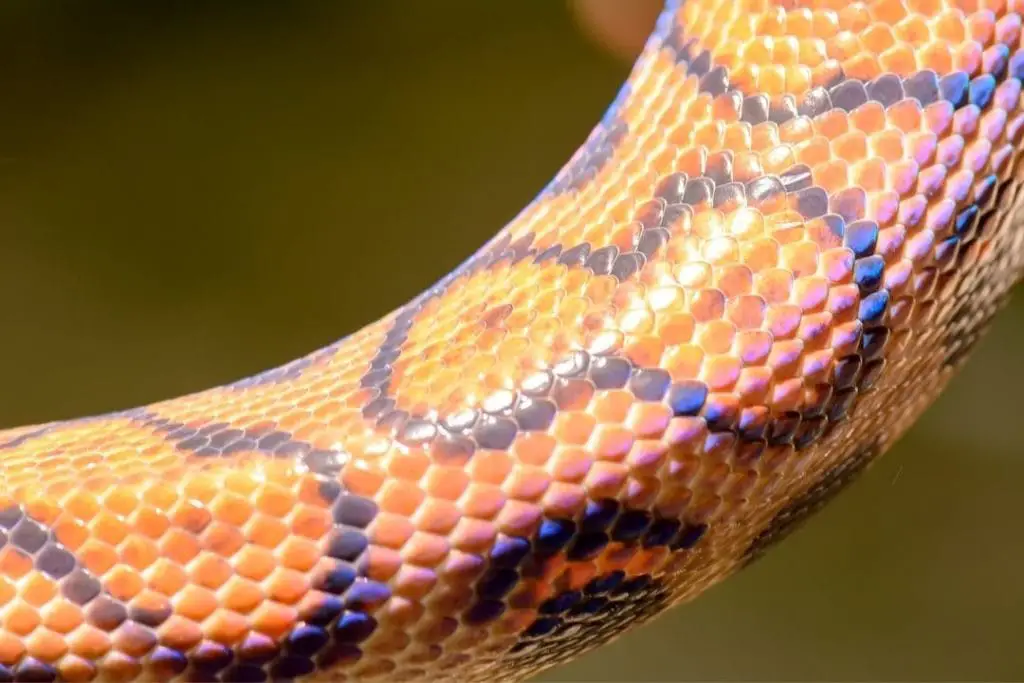
Most snakes will refuse to eat once they start the process of shedding. You may see cloudy eyes or a pink belly as the first signs of shedding.
Keep an eye on your snake and try offering a meal after it has fully shed. Once you find a full shed, give your snake a few days and try offering a meal.
Gravid females may prefer smaller prey or even refuse to eat. This is because they may feel too full for a meal.
Many males will also refuse to eat when they are ready to breed. If you are planning on breeding your snakes, be sure to offer smaller meals more frequently so they can survive a period of fasting.
5. Illness
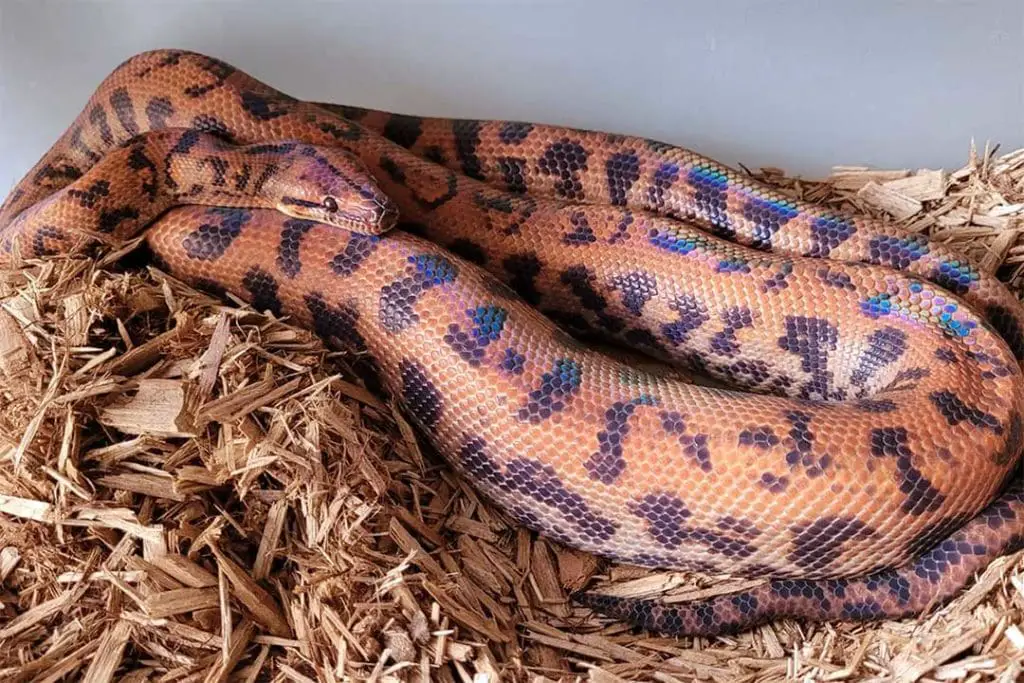
Many illnesses in rainbow boas have a loss of appetite as a symptom. If your snake has suddenly stopped eating for no reason, you may be looking at the first signs of a problem.
If you normally feed live, your snake may have been injured. If that injury gets infected, your snake may refuse to eat.
Respiratory illnesses frequently cause a loss of appetite. Be sure to listen to your snake’s breathing. Look for any signs of excess mucus and pus.
If your snake is regularly breathing with its mouth open, take it to a reptile vet immediately. Your snake could also have a parasite.
Many internal parasites can cause a loss of appetite. Take your snake in for a fecal test to see if it may need treatment.
Your vet can also order blood tests and imaging to check if there are any other health problems. If your snake is a very reluctant feeder and starts to seem lethargic, your vet can try force-feeding.
While this does stress out the snake, it can help keep it alive until you can get it eating on its own. If you are ever worried about your snake, a good reptile vet can help you keep your pet healthy and happy.
Conclusion
Brazilian rainbow boas are typically good about eating. Even if your snake is stubborn, most will feed well once you get them started. Snakes can also go for a long time without a meal.
So long as your snake isn’t losing weight and seems active, you can wait for your pet to be hungry.
If you have any questions or comments, be sure to leave them below.
